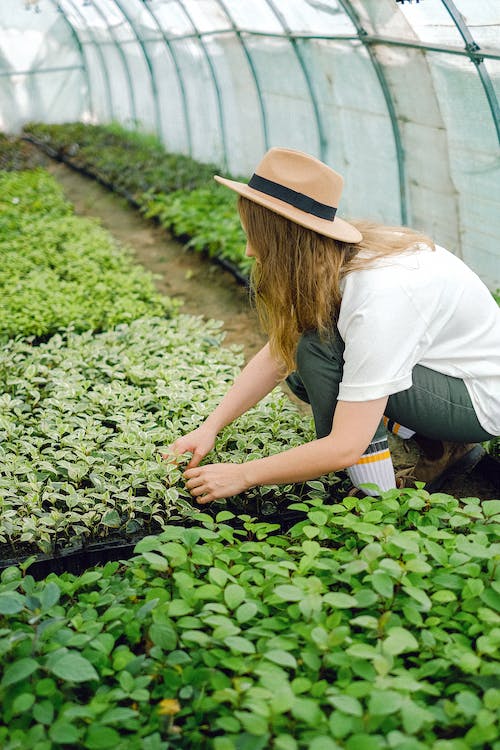Plants, Seeds, Materials
Planting A Food Forest Requires More Than Just Trees
Plants and seeds play a vital role in creating food forests, which are areas of land covered with a variety of food-producing trees, shrubs, and other plants. Food forests are designed to mimic the structure and diversity of natural forests and provide a sustainable source of food, medicine, and other resources for people and wildlife.
There are many different types of plants and seeds that can be used in a food forest, but some of the most useful include:
- Fruit trees – such as apples, pears, peaches, and plums, which provide a long-term source of fresh fruit.
- Nut trees – such as almonds, walnuts, and pecans, which produce nutritious nuts that can be harvested and stored for later use.
- Berries – such as strawberries, raspberries, and blackberries, which are a great source of vitamins, minerals, and antioxidants.
- Herbs – such as basil, rosemary, and thyme, which can be used for cooking, medicine, and other purposes.
- Perennial vegetables – such as asparagus, rhubarb, and artichokes, which come back year after year and provide a steady supply of food.
When planting a food forest on a large scale, it is important to choose plants and seeds that are well-suited to the local climate, soil type, and growing conditions. This will ensure that the food forest is able to thrive and provide a bountiful harvest for many years to come.
There are several strategies that can be used to plant trees and seeds on a large scale, including:
- Direct seeding – which involves spreading seeds directly on the ground and covering them with soil. This is a quick and cost-effective way to establish a food forest, but it may take several years for the plants to reach maturity.
- Transplanting – which involves digging up seedlings or young plants and moving them to a new location. This is a slower process than direct seeding, but it can help to establish a food forest more quickly.
- Tree tubes – which are protective sleeves that can be placed around young trees to protect them from damage caused by wind, animals, and other factors. Tree tubes can be especially useful in areas where wildlife is abundant and can help to ensure that the trees are able to grow and thrive.

It is also important to consider the arrangement of the plants and seeds in the food forest. For example, taller trees can be planted in the center of the food forest to provide shade, while shorter shrubs and ground cover plants can be planted around the edges to provide additional food and habitat for wildlife.
In conclusion, plants and seeds play a crucial role in creating food forests, which can provide a sustainable source of food, medicine, and other resources for people and wildlife. When planting a food forest on a large scale, it is important to choose plants and seeds that are well-suited to the local climate and growing conditions, and to use strategies such as direct seeding, transplanting, and tree tubes to establish the food forest as effectively as possible.
Planting a food forest requires a combination of materials, tools, and machinery to ensure success. In order to create a thriving and sustainable food forest, it is important to have the right equipment and resources on hand.
Materials:
- Seeds and seedlings: Selecting the right seeds and seedlings for your food forest is critical to its success. Choose crops that are well-suited to your local climate and soil conditions, and consider purchasing organic, non-GMO seeds when possible.
- Soil Amendments: Improving soil health is crucial for a successful food forest, and this often requires adding soil amendments such as compost, mulch, and rock minerals.
- Mulch: Mulch helps to retain moisture, suppress weeds, and protect soil from erosion. Consider using organic mulch, such as leaves or straw, to further improve soil health.
Tools:
- Shovels and digging tools: Digging tools are essential for planting and preparing the soil in your food forest. This includes shovels, spades, and garden forks.
- Pruning tools: Pruning is important for maintaining the health and structure of your food forest, and a variety of pruning tools, such as hand pruners, loppers, and saws, may be needed.
- Watering tools: Proper watering is critical for the success of your food forest, and a variety of watering tools, such as hoses, watering cans, and drip irrigation systems, may be necessary.
Machinery:
- Tractors and tillers: For larger food forests, a tractor or tiller may be necessary for preparing the soil and maintaining the food forest over time.
- Chippers and shredders: These tools can be used to create mulch and compost from pruned branches and leaves, helping to improve soil health and reduce waste.
- Mowers: A mower may be necessary for maintaining larger food forests and keeping pathways and areas around the food forest clear.
By having the right materials, tools, and machinery on hand, it is possible to successfully plant and maintain a thriving and productive food forest. Whether you are a small-scale backyard gardener or a commercial farmer, having the right resources at your disposal is key to achieving success.
Let’s talk about your project!
Our development team will be happy to get designing with you.
We asses your land, the future potential of perennial crops, etc.
Just contact us and we will see, if we can help.

More resources
Contact Us
ESSWALD
Supai-Ventures S.R.L.
Santa Maria del Cami
07320 Mallorca
Islas Baleares, SPAIN
(+34) 625 239 394
hello@esswald.com
